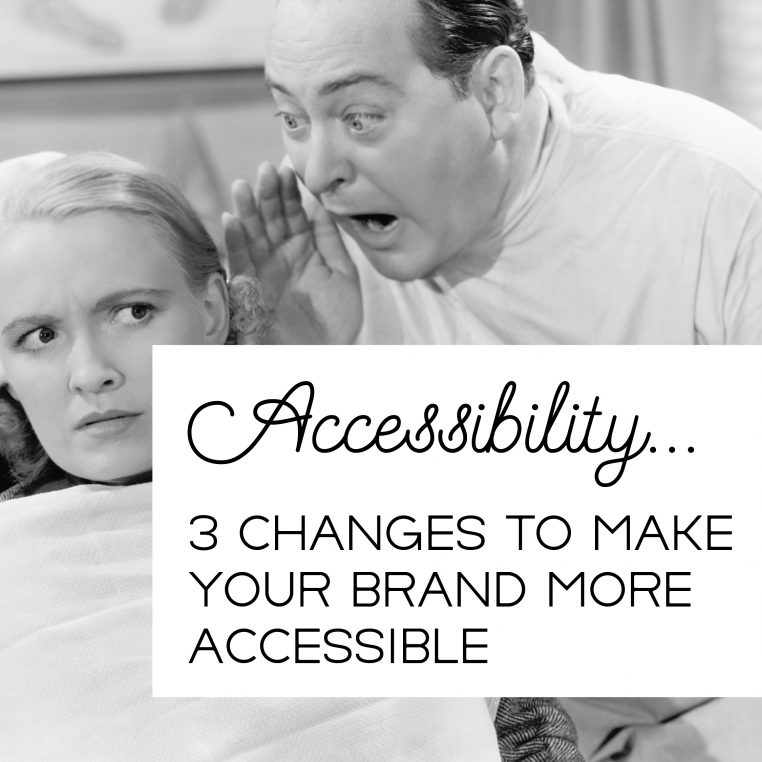Accessibility
A couple of weeks ago I went to a seminar on content marketing, hosted by weteachme, as part of their WeTeachMe Masters Series. Before I get into that I’d like to praise the two women who spoke- Beatrix Cole and Ophelie Lachat. I’ve been to A LOT of events and it’s rare to find speakers so well informed, engaging and non-repetitive. I received an overwhelming amount of information in the two hours, which was a testament to these women and their knowledge. So, hats off to them! And hats off to We Teach Me for sourcing them.
Now, onto the topic at hand. While there was a lot of helpful information, there was one thing in particular, that Beatrix brought up, that had NEVER occurred to me: website accessibility. This isn’t about Google or your clients being able to find you, or if you’re “accessible” to them, it’s about differently abled people being able to interact with your website and your brand. Beatrix said that 22% of the population is differently abled, and by not having your website accessible to them, you’re cutting yourself off from 22% of potential clients. So here are some takeaways I’m going to apply to my own website.
1 Alt Tags
For anyone that works on their own website, they’ll know there’s a part that asks for “Alt Tags” and anyone that’s worked with someone in SEO, knows they’ve probably been told to load it up with keywords. Uh, no. Don’t do that. That’s an old-school way of thinking. And don’t do the one thing that’s worse and leave it blank like…umm… (*yikes face*) me! I was doing that!
Alt tags may be used by Google, but more importantly, software uses them to read to the blind! How cool is that?! Software like “NVDA (NonVisual Desktop Access), which is a free “screen reader” that enables blind and vision impaired people to use computers.” It’s used to literally read your website to its users, and you can find it here: httpss://www.nvaccess.org. If your photo alt tags are “design”, “illustration”, “graphic design”, and “Melbourne”, that’s not going to paint a very full picture. If it said “A hand drawn illustration of the wildlife that is found in rural Australia. Kangaroo, koala, and some chubby magpies can be seen. This design was created in Melbourne, Australia.” then that’s much better and still has your keywords.
I’m hugely guilty of not using the alt tag properly. Time to get back in and fix that up. I feel so bad; I’ve been using such crap descriptions this whole time! Sorry blind people! 🙁
2 Colour
Thinking about colour, contrast is, of course, most important. 8% of the population has difficulty seeing the red-green spectrum. Christmas must be a nightmare for them, it looking like the whole world’s gone grey! If your logo or branding uses either or both of these colours, it’s something to consider. Using borders and white space on your website to separate these colours can be very helpful.
3 Font
Did you know that the easiest font to read is a sans-serif font? What’s sans-serif you ask? A font without any extra bits basically. Times New Roman, for example, is a classic serif font. Comic Sans, the butt of all design jokes, an example of a sans serif font. This font you’re reading right now is a serif font – no curly, extra bits.
Conclusion
There’s a really interesting application you can add to Chrome called WAVE. You can use it to see how accessible your website is. I added it and amazingly my site doesn’t seem terrible, but of course, there’s room for improvement. This really is the tip of the iceberg. There’s a lot more that could and should be done, but my hope is this blog will get people like myself considering how EVERYONE interacts with their site and brand. If you want to know more about making your website more accessible, look into #a11y or The Ally Project.

